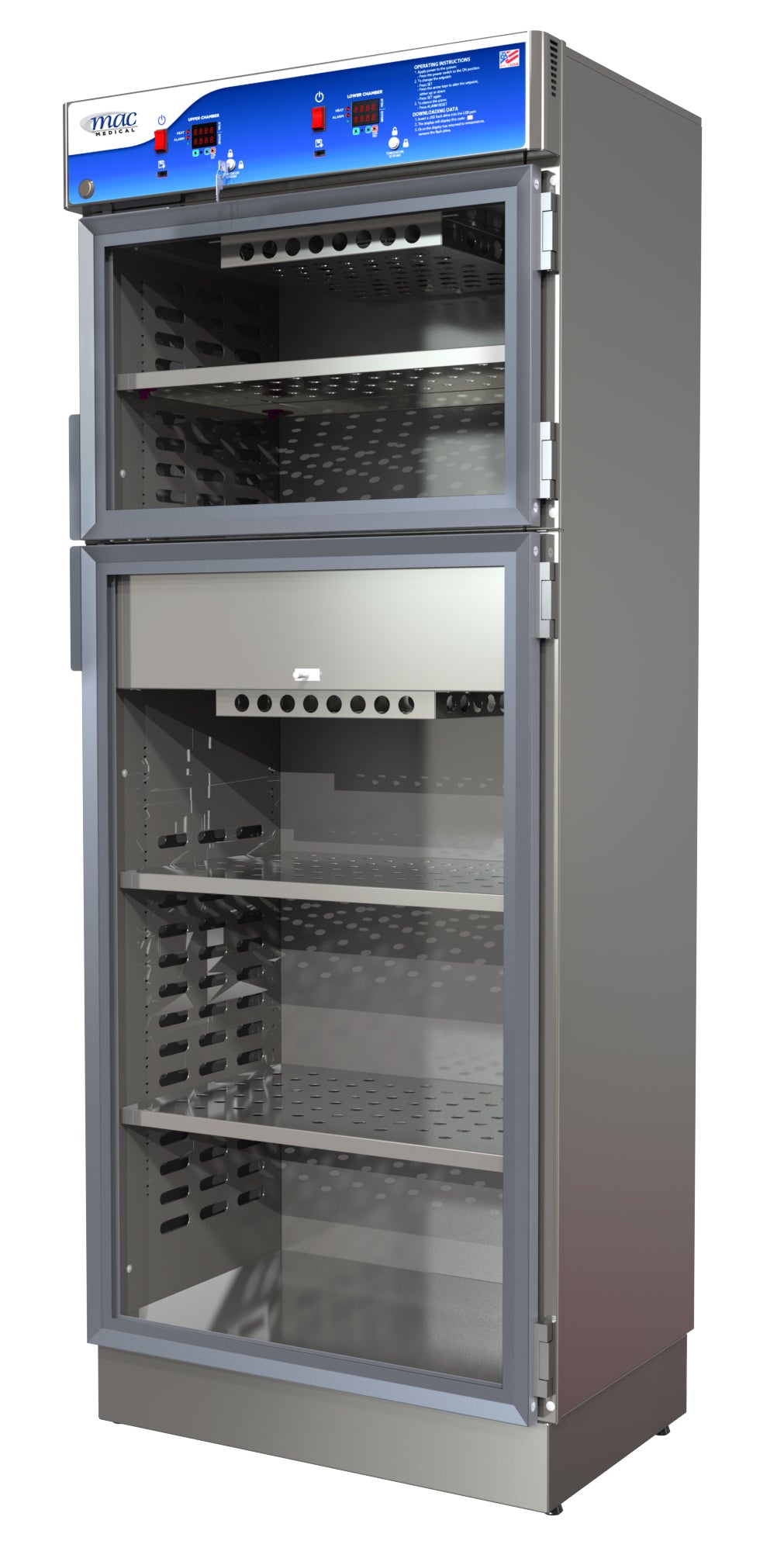Warming Cabinet Buyers Guide

Is your warming cabinet certified by the National Safety Commission for Warming Cabinet? Your answer will be "no" because there is no such regulatory body for the design and construction of the cabinets littered throughout healthcare facilities worldwide. As manufacturers look for competitive advantages to sell more cabinets, they are free to cut corners without oversite or regulations outside of electrical safety, and this is something of concern.
The purpose of warming blankets or fluids is indirectly therapeutic, yet federal agencies class them in the lowest risk class. When deciding on the appropriate warming cabinet for your applications, the following points will help you understand what you are ultimately buying.
RISK FACTOR
BLANKETS: Only clean blankets are stored in the cabinet, and the temperature control has quite a broad tolerance, so the risk is lower than fluids. The hands that come to retrieve the cabinets may not be so clean, and the cabinet void should still be able to be thoroughly cleaned to reduce the risk of H.A.I. (Hospital Acquired Infections).
How many of us have heard of warming cabinet fires? Blankets create convection heat and overstuffing the chamber can result in excessively hot blankets.
FLUIDS: Fluids are the more considerable risk! Fluids must be maintained at accurate temperatures to ensure the contents retain potency and shelf life. The manufacturers of the fluids I.F.U.'s will provide shelf-life guidelines and how it is affected by temperature, which in some cases could reduce potency or validity. It is imperative to have accurate temperature control throughout the chamber without hotspots, making air circulation a crucial factor. This product is going into a patient internally in most cases and should not be taken lightly.
CABINET MATERIALS
A well-made cabinet is the base of your complete system. All components rely on the foundation of the cabinet to do their job correctly. The cabinet is where many manufacturers have come out with lower-cost alternatives to Stainless Steel which is still the industry standard today for infection control. Painted steel is substantially cheaper than stainless steel, but it is susceptible to corrosion after the painted surface is scratched and less resilient to dents or dings. A stainless steel cabinet is likely to outlast a painted cabinet 3:1, and as long as it is 304 stainless steel, it is the preferred material for infection prevention and control. Mixing metals creates a chain with a weak link, and the cabinet will only ever be as good as the weakest link.
CABINET DESIGN
So we just build a cabinet and pump heat into it, and all is well? That's what the eco-models would like you to believe, but again, the supplies in the cabinet are therapeutic, and regulation does matter! The traditional design has a channel running behind the cabinet wall, allowing even heat circulation throughout the cabinet from the oven-style element placed in direct proximity to the industrial-grade fan motor. Cost-cutting methods have eliminated the internal ducting and adhered heating strips against the back of the cabinet with a simple computer fan mounted in an opening in the back of the cabinet for circulation.
To visualize this, consider your home furnace with all the ducting circulating the heat throughout your house. This is how the traditional design works. Imagine removing the duct from your furnace and putting an oscillating fan beside it to circulate your heat. This is how the new method works.
You get the picture!
COMPONENTS & REPAIR PARTS
First, make sure that replacement parts are readily available domestically and that a support system is in place. If you follow the manufacturer's I.F.U. and maintenance schedules, you will need parts for the upkeep and safety of your cabinet. What product or brand that you buy doesn't matter if you do not follow the manufacturer's I.F.U. and maintenance schedule. It is essential to have access to the parts but equally important to have tech support to ensure the parts will not alter the internal temperature. Most warming cabinets are simple to repair with plug-and-play parts, while other parts require programming.
CERTIFICATIONS
The only certification these cabinets will have is electrical safety, which is important to verify. If the cabinet does not have a domestically approved certification (C.S.A. in Canada), be sure to get it inspected. Warming cabinets have heating elements in them that must meet the code.
I.P.A.C. CONSIDERATIONS
Everything in a medical facility should be I.P.A.C. compliant, which comes down to the ease of cleaning and decontamination of the surfaces. Review the manufacturer's I.F.U. for cleaning and verify that your current cleaning protocol will not degrade the cabinet or controls. Not all materials are suited for modern healthcare cleaning products.
CAPACITY
Buy 10% larger capacity than you need as you should never overstuff a warming cabinet. The accuracy of the temperature is dependent on airflow and it is always best to leave sufficient space between the cabinet walls. Overstuffing will result in convection heating and create hotspots within the cabinet.
CHAMBERS
Blankets and fluids should never be kept in the same chamber and heated together. The risk is greatest for the fluids to become over-temp and reduce their efficacy or shorten the shelf life. Blankets and fluids are warmed to different temperatures and the airflow in a chamber filled with blankets is insufficient to maintain temperatures within the tolerances prescribed. If you are warming both blankets and fluids, you need a minimum of a dual chamber cabinet.
These are the main factors to consider when deciding on a warming cabinet. It is easy to buy a warming cabinet solely on price, but not all cabinets are equal, and for many, it will be in the after-sale that they will understand the differences. It is more than a cabinet; it stores and manages therapeutic supplies' temperatures.
